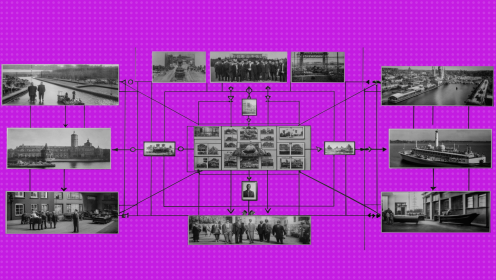Top managers have a dangerous misconception: they say that the employee needs to be loaded as much as possible and strictly control working hours - then they will work more productively. Of the five companies I worked for, two of them had directors who lived on this principle (I think you've seen some of them, too). But in reality, as you know, everything is different. Too high workload reduces performance. And when an employee is required to work all the time (and even at lunch), and even at full strength - he quickly burns out and there is no question of any high results. Just a pile of ash on the work chair, mistakes and deadlines.
However, the opposite situation also happens. There is little work, employees sit idly in soft chairs for half a day. And looking at this, the top manager thinks: "do we need such a large staff? is it worth keeping everyone on a full-time basis? should I fire half of them?» In general, he thinks about anything, but not about doing something wrong. Although, it would seem that this is an obvious idea on the surface: in order for the team to be constantly operational, you need to evenly distribute the load, and not all this.
How to manage team loading
For a while I managed a small team, but even more time I carefully watched how people (including me) are managed by others. During my observations, I have identified 4 areas in which it is worth working in order to successfully distribute the workload. It might be useful for you, too.
Identify the capabilities of team members
Talk to everyone (if you haven't already) and find out who knows what. This will make it much easier for you to distribute tasks between them in order to maximize their useful skills.
Bottleneck
If there is an uneven distribution of opportunities, there may be situations when some important tasks can only be performed by one eternally busy specialist. This is a bottleneck - due to insufficient qualifications of other specialists, work at a particular stage slows down and the effectiveness of the entire team decreases.
For example, I worked in a digital Agency where there was a whole department of frontenders. But only one of them - the head of the department could not just make up the site, but also register the logic. Every New year, when the Agency made special projects for clients, managers went crazy - all projects needed the help of a developer, but only one of the entire front-end department could perform this role. As a result, the Agency constantly missed deadlines, and customers were dissatisfied.
And the way out is simple-to send younger specialists to study and improve their skills.
Automate processes
High-quality automation of processes in an organization is an irreplaceable thing. Having implemented a good project and task management system (for example, WEEEK), you will see the number of tasks for each employee, the work schedule, the actual time spent, etc. And having such data on hand, it is not difficult to distribute the load and control the work of the team.
Control your workload
So, by implementing automation, you can control the workload of team members - see how many tasks are assigned to each of them and reallocate them if necessary. Pay attention not only to the number, but also to the duration, urgency and relevance of tasks. If an employee is working on an important part of a project that needs to be completed in a few days, do not set additional tasks for them - they will not perform them efficiently, and the project will not have time to finish.
If you work with contractors and subcontractors that are much more difficult to control, always check with them about loading on other projects. Having up-to-date data on their loading and free time that they can devote to your tasks, you can approach the issue of distribution much more rationally.
Plan
No project goes exactly according to plan, but this is no reason not to plan. Even if you know at least approximately what to expect from work in the coming weeks or months, you can imagine the workload level of all employees.
Read also
6 tips on how to follow the plan
It's important not to overdo it. When (exactly "when", not "if") something goes wrong, do not cling to the original plans, but try to adjust, redistribute the workload. In short, if you can't solve the problem one way, try another — otherwise the team may lose valuable resources.
How to manage your work load
It seems that managing your own upload is not much different from managing employee uploads. Automation, plans, identification of opportunities, schedule of free time - all this is relevant. But there are nuances:
- If you are prone to procrastination, you will need control from above. Otherwise, load management may turn from an improvement tool into an end in itself.
- Think about who you can delegate your tasks to when the load is too high. It often happens that the Manager does not want to burden colleagues with their tasks, and in the end it turns out to be too busy for full-fledged work (hi, this is me).
- Don't microcontrol your subordinates - let them do their own thing and you do yours. You must have them. And entrust the work of specialists to specialists.
- If you work remotely, don't try to work all 24 hours a day. Good sleep is essential for high performance - as is food and timely breaks. If you try to always be in touch, you will not be able to rest and, as a result, you will not be able to fully work.
Keep this in mind and everything will be fine.
An excessively high workload reduces the productivity of even the most advanced specialists. If you think that you can handle everything on your own, or that your team will push and give you a great result in a short time, I have to upset you - you can't do it, you won't give it away. Work on wear and tear, in the end, does not lead to anything good. Even if at first it seems the opposite.
If you or the team have to work hard, it means that you, as a manager, are doing something wrong.
I will not end up throwing out pathetic words about "the key to successful work", etc. Management of working loading is never the key. But a very important manager tool that you need to be able to use. I want to believe that you will learn, and I hope that this note helped you.

















